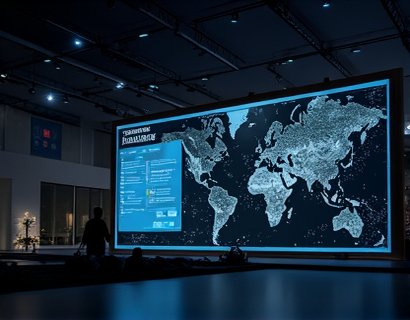Streamline Web Development: Unlocking Efficiency with Custom Placeholder Code Generation
In the fast-paced world of web development, efficiency and productivity are paramount. One crucial aspect that often gets overlooked is the generation of placeholder website code. This process, though seemingly mundane, plays a vital role in the overall web development workflow. Placeholder code serves as a temporary solution, allowing developers and designers to focus on the more critical aspects of website creation, such as design, functionality, and content. By automating the creation of this placeholder content, professionals can significantly streamline their work, saving valuable time and enhancing the quality of their projects.
Placeholder code is essential for several reasons. Firstly, it provides a realistic preview of the final website, enabling stakeholders to visualize the layout, design, and user experience before the actual content is finalized. This early visualization helps in making informed decisions about design elements, navigation, and overall structure. Secondly, placeholder code allows developers to test the website's functionality and responsiveness across different devices and browsers, ensuring a smooth user experience. Lastly, it buys time, giving teams the flexibility to focus on more complex tasks without the pressure of immediate content creation.
Benefits of Using Custom Placeholder Code
The advantages of using custom placeholder code are manifold. For developers, it means less time spent on creating dummy content and more time on coding and testing. This efficiency translates to faster project turnaround times and reduced stress levels. Designers benefit from a consistent and realistic base to work upon, allowing them to concentrate on creating visually appealing and user-friendly interfaces. Business owners and digital agency teams can present polished prototypes to clients, fostering better communication and client satisfaction.
Moreover, custom placeholder code can be tailored to match the final design and branding of the website. This consistency ensures that the placeholder content aligns with the expected user experience, reducing the likelihood of major revisions down the line. It also helps in maintaining a cohesive look and feel throughout the development process, which is crucial for brand identity and user trust.
Challenges in Generating Placeholder Code
Despite its benefits, generating placeholder code can be a challenging task. Manually creating dummy text and images is time-consuming and prone to errors. Ensuring that the placeholder content is both realistic and relevant to the final product requires a deep understanding of the project's requirements and the target audience. Additionally, maintaining consistency across multiple pages and ensuring that the placeholder code integrates seamlessly with the development framework can be daunting.
Another challenge is the need for customization. Each project has unique requirements, and a one-size-fits-all approach to placeholder code generation is often insufficient. Developers and designers need tools that can adapt to their specific needs, providing flexible and customizable solutions. This is where the importance of an expert tool for generating custom placeholder code becomes evident.
Expert Tool for Custom Placeholder Code Generation
An expert tool for generating custom placeholder code is designed to address these challenges head-on. Such a tool offers a range of features that simplify the process, making it more efficient and effective. Let's delve into the key functionalities and benefits of using such a tool.
Firstly, these tools provide a user-friendly interface that requires minimal technical knowledge. Whether you are a seasoned developer or a non-technical business owner, the tool's intuitive design ensures that anyone can generate high-quality placeholder content with ease. The interface typically includes predefined templates and customization options, allowing users to tailor the placeholder code to their specific needs.
One of the most significant advantages of these tools is their ability to generate realistic placeholder text. Advanced algorithms can create paragraphs of text that mimic the style and length of real content. This includes varying sentence structures, use of common phrases, and even random word combinations that reflect the tone and style of the final content. For images, the tool can generate placeholder images with realistic textures, colors, and shapes, providing a visually coherent preview.
Customization is another critical feature. Users can input specific data, such as company names, product names, and contact information, to make the placeholder content more relevant and realistic. This level of customization ensures that the placeholder code aligns with the project's branding and messaging, enhancing the overall user experience.
Enhancing Efficiency with Automation
Automation is at the core of these expert tools, significantly reducing the time and effort required to generate placeholder code. Instead of manually typing out dummy text and uploading images, the tool does it for you, often with just a few clicks. This automation not only speeds up the process but also minimizes the risk of human error, ensuring that the placeholder code is consistent and error-free.
For developers, this means they can focus on writing actual code and implementing features rather than getting bogged down by placeholder creation. Designers can spend more time on layout and visual design, knowing that the placeholder content will look professional and cohesive. Business owners and agency teams can present more polished prototypes, leading to better client interactions and project approvals.
Moreover, these tools often integrate seamlessly with popular development frameworks and content management systems. This integration ensures that the placeholder code is compatible with the existing tech stack, reducing setup time and potential compatibility issues. For example, tools can generate placeholder data that fits into API endpoints, database structures, and other backend components, providing a comprehensive solution for web development.
Real-World Applications and Use Cases
The applications of custom placeholder code generation are diverse and widespread. For digital agencies, these tools are invaluable for creating quick prototypes to showcase to clients. Agencies can demonstrate the final product's look and feel without the delay of content creation, accelerating the project timeline and client satisfaction.
Tech startups, often working with limited resources, can leverage these tools to streamline their development process. Startups can focus on building core features and functionalities while using placeholder code to maintain a realistic preview. This approach helps in securing funding and attracting investors by presenting a professional and functional prototype.
E-commerce businesses can use placeholder code to set up product pages and store layouts before the actual content is ready. This early setup allows for testing of checkout processes, product filtering, and other critical functionalities, ensuring a smooth user experience once the site goes live.
Marketing professionals and content creators can also benefit from these tools. They can use placeholder text to test the effectiveness of different copy strategies, analyze user engagement, and optimize content before the final version is implemented. This iterative process leads to higher-quality content and better marketing outcomes.
Best Practices for Using Placeholder Code
While expert tools for placeholder code generation offer numerous benefits, it's essential to follow best practices to maximize their effectiveness. Here are some key considerations:
First, always use placeholder code as a temporary solution. It's crucial to replace the dummy content with real content as soon as it's available. Leaving placeholder content on a live site can lead to confusion and a poor user experience.
Second, ensure that the placeholder data is relevant and contextually appropriate. For instance, use industry-specific terms and phrases to make the content feel more authentic. This attention to detail enhances the realism of the preview and helps stakeholders visualize the final product more accurately.
Third, maintain consistency across all pages. Use the same formatting, font styles, and layout structures for placeholder content as you would for real content. This consistency ensures that the preview reflects the final design, making it easier for stakeholders to provide feedback and for developers to implement changes.
Fourth, document the placeholder code and its usage. Keeping a record of the templates and customization settings used can be invaluable for future projects or for other team members who need to pick up where you left off. This documentation helps in maintaining continuity and reducing onboarding time.
Conclusion
In conclusion, streamlining web development through custom placeholder code generation is a game-changer for developers, designers, and business owners. By leveraging expert tools that offer customization, automation, and seamless integration, professionals can significantly enhance their productivity and project quality. These tools not only save time but also ensure that the placeholder content is realistic and aligned with the final product, leading to better client satisfaction and project success.
As the web development landscape continues to evolve, the importance of efficient and effective placeholder code generation will only grow. Embracing these tools and best practices will position professionals ahead of the curve, enabling them to deliver high-quality, user-centric websites with ease.











































